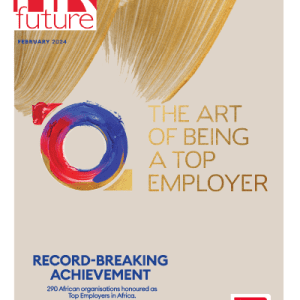Recruitment is a critically important aspect of every HR professional’s work. The effectiveness of this process determines the productivity and atmosphere within the team. Mistakes in hiring can lead to a significant waste of time and resources. Together with experts from the consulting company Avenga, we will look at 10 of the most common HR recruiting blunders.
Avoiding them might help you in selecting a new employee who will contribute to your company’s success!
Mistake #1. Ignoring the company’s business strategy
Often, businesses aim to quickly fill vacancies. This leads to hiring people without considering the company’s strategic plan. Effective recruitment requires strategic thinking. To ensure the best alignment with the corporate strategy and culture, companies should use permanent recruitment services.
Advice for professionals: it is important to find a balance between speed and quality in hiring. Recruiters should resist the pressure to quickly fill a vacancy, and spend time on thoroughly preparing the job description, list of responsibilities, skills, and knowledge required for the position. That information is key.
It’s important to define the stages of the hiring process, and plan what will happen after you create a shortlist of the potential candidates. Will you move on to a phone interview, a preliminary assessment, or a test task? A clear understanding of each step will help you hire employees effectively. Create a recruitment funnel and define actions at each stage. Use a candidate tracking system to manage the process. This will make your recruitment consistent and effective.
Mistake #2. Inability to consider recruitment as a marketing task
In conditions of increased busyness, applicants carefully study companies. Your website and branding should be attractive. It is important to clearly state what your company offers employees. Approach recruitment as marketing your brand.
Regardless of whether you have current employment needs or not, it is very important to always create a pipeline. Having a talented pool of potential candidates makes it easier to hire employees when the need arises. You can strengthen your employer branding and develop a good marketing strategy to remain in the spotlight of applicants.
Mistake #3. Passive waiting for applications
Do not limit yourself to posting vacancies on job search websites. Actively search for candidates on LinkedIn and other resources. Use your employees’ networks to seek recommendations.
Mistake #4. Ignoring potential employees
Many companies do not consider immigrants or people with disabilities as potential candidates. However, these groups offer significant talent and will contribute to diversity in the workplace. The practice of “blind hiring” can help overcome unconscious bias.
Mistake #5. A random approach to selection
When you have formed a pool of candidates, it is time to narrow down the list and make a decision. This is the stage where many rely on their intuition. However, research shows that a more objective approach leads to more correct hiring decisions.
Use a structured approach in the selection process. Apply the same criteria and evaluation methods to all candidates. Take notes and use a simple evaluation table to assess candidates at each stage.
Mistake #6. Asking incorrect questions during interviews
Avoid any topics that may be perceived by the applicant as discriminatory. Know which questions are legally prohibited. Focus on qualifications and professional skills.
Recruiters have transitioned from standard yes-or-no questions to more complex behavioral questions to better understand the personalities and thinking of candidates. However, over time, many of these behavioral questions have become too well-known, allowing candidates to prepare pre-polished answers. For example, questions about the biggest challenge, main strength or weakness, and most significant achievement are often asked.
Candidates already expect these questions and prepare standard answers.
For more effective candidate evaluation, it is important to ask less predictable questions. For example, ask what they are proud of, how they would describe themselves in one word, or what particularly annoys them. You can request a story about a conflict with a manager or a situation where they failed and what they learned from it.

Mistake #7. Too many people involved in hiring
A large number of participants slows down the hiring process. This can worsen the candidate experience and reduce the effectiveness of selection. Aim for the optimal number of selection participants. Usually, the HR manager and someone from the department are sufficient to review resumes.
In addition, it is good practice to conduct a group interview involving other team members. Ideally, two to five employees should be involved in the hiring process.
Mistake #8. Ineffective job postings
Review the latest job postings in your company. Do they only list duties and requirements? Such an approach can deter potential candidates.
Your job postings should have the following goals:
- stand out among competitors;
- evoke interest and attract attention;
- motivate candidates to apply.
To achieve these goals, it is important to create an attractive job posting. Include not only basic information but also tell what makes your company unique. Describe the mission, vision, core values, and corporate culture, give an idea of what everyday life is like in your company, and indicate the proposed salary range.
Mistake #9. Focusing only on corporate culture fit
Recruiting based on corporate culture is widespread. It seems logical: a new employee who fits well into the team reduces conflicts and speeds up adaptation. But this approach has pitfalls. Too strict adherence to this principle can lead to uniformity of thinking. Teams consisting of similar people often become “echo chambers” where new ideas are not encouraged. It also hinders the introduction of diversification, making the team less flexible and innovative.
To avoid these problems, it is important to strive for cultural addition, not just fit. Look for candidates who will bring new perspectives and approaches to the team, even if they do not quite fit the existing corporate culture.
Mistake #10. Not considering internal recruitment
Sometimes, the ideal candidates are already working for you. Filling vacancies from within saves time and money that you would spend on searching for external candidates.
Employees already working in the company know its culture and processes. They adapt to new tasks more quickly. Promoting and developing employees also increases their motivation and productivity. This contributes to better communication and collaboration within the team. Never ignore the potential of your employees: internal recruitment strengthens your team and accelerates goal achievement.
Avoiding these mistakes will significantly improve the quality of your hiring. By using objective assessment methods and considering the needs of the business as a whole, you will be able to build teams that not only strengthen the corporate culture but also contribute to long-term success.
Guest writer.














